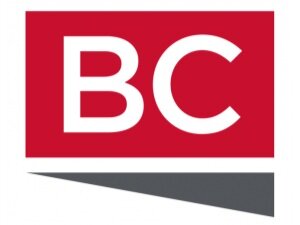
Project-based strategic support

Case examples |
Corporate & business unit strategy
Healthcare
Delivering a step change in performance and capability for a health diagnostics provider
Context
COVID-19 pandemic has had a significant impact on Australian economy from February 2020 in almost all major sectors.
Seeing its financial health being negatively impacted, a lead health diagnostics conglomerate decided to scan their major Business Units in search for opportunities to increase EBITDA results for FY21 and stablish a “line of sight” improvement list for FY22 and FY23.
A BC team was engaged alongside a Partner from Hatch Advisory to support the client in identifying opportunities for the business, structuring initiatives to deliver the identified potential and tracking the initiatives’ progress alongside the BU Chief Financial Officers from the client team
Approach
After an initial 5 week period where the Partner and the Manager scoped out the need of the business, and supported the business by providing 2 Business Analysts, three areas were identified:
Laboratory Workflow
Workforce Optimisation
Change Management Discipline
A framework was developed for each area with the objective of standardizing and upscaling best practices in client capabilities, which utilized the client’s databases and interviews with key client management stakeholders.
Improvement across these three areas was forecast to deliver $80 million FY21 benefit
Outcome
Change Management Discipline improvement allowed the client to structure all their FY21 initiatives with a solid tracking system to guarantee benefits were delivered on time.
For Laboratory Workflow, all major laboratory flows were mapped and best practice implemented in key sites.
On Workforce Optimization, a standardized rostering method was adopted in all regions based on demand planning that allowed leadership to better track performance with data and manage the labour costs in budget
Define and deliver initiatives worth >$40m EBIT for a leading health diagnostics provider
Context
A leading health diagnostics conglomerate was looking to develop a sustainable improvement plan to ensure longer-term financial targets could be met in a post-Covid world
The CFO decided to scan their major Business Units in search for opportunities to improve EBIT results for FY22 and FY23, with a focus on improving labour and supply chain productivity
A large BC team was engaged to support the client across multiple support phases, including initially identifying top-down opportunities, before working closely with business stakeholder to develop bottom up initiatives and implementation plans to deliver the identified value
Approach
The team spent an initial 8 week period identify a top-down full potential plan for labour and supply chain initiatives. Targets were aligned with business unit stakeholders and shared with the board
The team the worked alongside the business to develop underlying initiatives and implementation plans in order to achieve the identified value. The team ensured then supported the business in implementing initiatives and delivering value.
Examples of initiative operationalisation include:
Developing Power BI dashboards to help overtime and leave mgmt
Creating site by site recommendations on opening hours and a detailed KPI dashboard to track progress
Leading the end-to-end RFI process for a route optimisation provider
Outcome
The team helped define >$40m of run-rate value across multiple initiatives and set-up clear tracking mechanisms across all initiatives
The team have been extended for FY22, to continue to drive the implementation of existing initiatives and also work through further opportunities including revenue strategy and laboratory operational improvements
Professional services
Bank IT architecture strategy to support a digital service offering and attract the next generation of customers
Context
An Australian financial institution needed external counsel on its existing IT Architecture to identify what problems and critical imperatives need resolved for it to realised its Digital banking vision. Customer growth had stagnated as the bank was unable to meet the Digital service expectations of new customers.
The Chairman and CEO had set a clear vision that the bank needed to rejuvenate its customer offering to retain existing and new customer loyalty. However, the current roadmap was end of life focused, and the range and depth of technology issues meant significant investment areas may not be ”no-regrets”.
BC Strategy was engaged by the client to develop a future focused IT Strategy
Approach
The project was broken into 2 phases:
initial insight gathering and a focus on establishing replacement options for Core Banking technology
developing a future state IT architecture roadmap
The initial phase established key problem areas and critical business imperatives to BUs. The imperatives were given a relative weighting, and mapped back to architecture components to establish a heatmap of IT imperatives and capability gaps.
Subsequently the team developed a core banking recommendation through a series of workshops with the CEO, and established an optimised IT Architecture Roadmap, with associated guidance on existing investment, target operating model and procurement
Outcome
The proposed strategy and implementation roadmap was agreed by the CEO, Chairman and leadership team.
The final recommendation included an overhaul of the existing IT operating model and procurement processes. The assessment also prevented the client making a multi-million dollar investment in a core banking system replacement, as a critical path for improving the existing system and de-aggregating it from the broader architecture was provided.
The client are currently focusing on rolling out the IT Architecture Roadmap that was recommended, and have strengthened the IT team and operating model to ensure strategically aligned investment decisions going forward.
Definition of a new growth strategy for a professional services firm
Context
A large urban planning and economics advisory firm had seen revenues and profits begin to stagnate in light of macro megatrends, changing client needs and an increased competitive intensity.
The board and senior leadership had set aggressive growth targets and a new strategy was required in order to evolve the existing service offering and better meet client needs.
A senior BC Strategy consultant was engaged as project manager, leading a team of 4 clients over 2 months to develop a 5-year growth strategy for the client.
Approach
In the initial 3 week phase of the project the team identified and prioritised growth options by business unit, including exploring new service offerings and new market segments. Customer feedback, international case examples, client interviews, bespoke data analysis and market reports were all utilised to help prioritise the options.
Within phase two the prioritised options were fleshed out and translated into clear and actionable implementation plans for each of the business units. Significant time was invested in co-creating the recommended initiatives with on-the-ground teams to ensure a seamless transition into implementation
Outcome
The final recommendation defined initiatives that could grow revenues by >50% over a 5-year time frame, while improving margins by >5pp.
The proposed strategy was approved by both SteerCo and the Board and is in the process of being implemented over H2 FY20
“We were very impressed by the quality of work produced over such a short time frame and with how the overall process was managed” Head of Strategy
Support to annual business planning process and development of a new pricing strategy for a non-profit provider of aged care and social services
Context
A large provider of aged care and social services in NSW had been through significant organisational changes and was facing financial challenges.
As the organisation looked to expand its social impact they also wanted to ensure their long-term financial sustainability. Market environments were unfavourable due to changes in public policy, funding and increasing costs.
The organization engaged BC Strategy to help develop their plans to improve financial sustainability over the near term and redesign the pricing strategy for one of their most important business units.
Approach
The team collated industry benchmarks and market projections and developed forecasts of a momentum case for the organisation. Based on this analysis, f inancial targets were developed in collaboration with the Group CFO and Directors of each BU which would ensure financial sustainability for the group. These targets were then used to develop operational plans and to guide the budgeting process.
Additionally a comprehensive review of the pricing strategy was conducted to identify areas of future opportunity. This included competitor analysis, detailed financial modelling and customer and industry research. The team recommended a significant shift in pricing strategy which will deliver millions of impact for the organisation.
Outcome
The organisation developed robust financial targets for the upcoming financial year, allowing them to ensure their financial sustainability whilst still delivering on their social impact goals.
A new pricing strategy was identified with several million of annualised impact
10-years strategy for a 240$M business unit of a community service provider
Context
A leading provider of aged care and social services in NSW has been given mandate to develop a 10-year growth strategy for its Community Service business unit, accounting for ca. 240$M revenue and over 20% of the entire organization revenue in FY22
The key goals underpinning the strategy are the geographical expansion in regional areas in NSW, an increased focus on early intervention, the delivery of high social impact services in a financially sustainable way
The organization engaged BC Strategy to support the strategy design and the development of business cases for 5 growth portfolios
Approach
The team conducted workshops with the clients to identify the key growth levers and expected evolution of the service mix in each portfolio, drawing assumptions based on the policy outlook, the organization’s capabilities and strengths, and alignment to the strategy objectives
10-year P&L and customer projections have been developed for each portfolio, ensuring financial sustainability in the long term • Whole of organisation investments in horizontal functions (e.g. Advocacy, Research, Service Innovation) required to support the strategy have also been quantified
“Social impact cases” have been developed for each portfolio, outlining expected social outcomes of the strategy as well as targets for key Social Impact metrics (e.g. # of regional customers served)
Outcome
The client has a 10-year strategy that is expected to drive revenue growth from ~240$M to ~400$M through specific actions
The client presented the business cases to its Board of Directors to seek approval for the investments
The business cases are used to inform the implementation roadmaps for the individual portfolios as well as to track progress in the implementation
“The BC team was proactive, collaborative and insightful throughout our strategy project. They guided our problem solving in a logical and structured manner, providing our Executive and Board with clarity of the strategy, risks and choices we faced.” Head of Social Impact & Innovation
Retail
Development of own brand health strategy for a leading Australian retailer
Context
A major Australian retailer was looking to review their existing own brand health strategy, in light of changing consumer preferences across health. The existing own label offering was underperforming the market and customer feedback suggested the category was challenging to shop.
The board had set aggressive revenue growth targets for health, and a new overarching brand strategy was required in order to become a national leader in the category
A BC Strategy team was engaged for 2 months to work alongside senior strategy and marketing stakeholders to develop the new own brand health strategy
Approach
The project was broken into two phases; initial insight gathering and a staged strategy development.
Prior to the initial insight gathering phase the overarching brand strategy was structured into sub-components to be addressed. Once this was aligned with the client the team proceeded to collate customer insights and generate bespoke international case examples on each defined element of the strategy.
Over the following weeks the team developed recommendations and action plans for each strategy component (e.g., brand architecture, brand values, pricing and promotion strategy, ranging, marketing etc.) and held workshops to align key stakeholders on the recommendations.
Outcome
The proposed strategy and implementation roadmap was signed up to by the ELT
The final recommendation included an overhaul of the existing brand architecture and recommendations to introduce over 300 new own brand health SKUs over the upcoming 24 months in order to drive health leadership.
As a result of the project a BC Strategy team were subsequently engaged on a retainer basis later that year to support other own-brand strategy work
“The BC Strategy consultants were the best contractors I have worked with. The quality of output was a refreshing change from some of the other profiles I have worked with recently” Senior Strategy Manager

Case examples |
Commercial due dilligences
Due diligence of the used car market and assessment of replicability of overseas best practices in Australia
Context
A venture capitalist was looking into the Australian used car market and was especially interested in replicating Carvana model given its success in the US.
A BC Strategy team (1 Senior Analyst + 1 part-time Principal) was engaged to run a short 1-week analysis and present its conclusion to the investor.
Approach
The project was split into 2 inter-related streams:
An overview of the Australian market
An in-depth analysis of Carvana business model and best practices
The first day was used to gather as much high-level information as possible and draft a ‘One-Day Answer’ (ODA) based on key assumptions to validate.
The rest of the week was focused on proving (or disproving) the ODA and bringing critical nuances to the response.
Key differences between the US and Australian market and replicability of Carvana model was summarised in a short pack with supporting analyses.
Outcome
Based on the critical insights brought by the team, the client refocused its interest on a few niches in the market rather than replicating the full Carvana business model
Market assessment of the 2nd-hand book market in Australia for a PE firm looking to expand into APAC
Context
A PE firm identified a UK-based 2nd-hand book retailer with significant opportunity to steal market share from its peers as well as an opportunity to expand into additional international markets. As part of a Commercial Due Diligence, an Australian based team was appointed to conduct a market assessment of the local market to identify size of the price as well as a high level market entry strategy
A BC Strategy senior consultant was appointed to lead the analysis of the market attractiveness with oversight of both an external manager and partner from a renowned Australian Strategy consulting firm
Approach
Across the span of 3 weeks, the team conducted a full market analysis based on expert interviews, mystery shopping, consumer surveys and desktop research in order to assess the potential of an expansion into this market.
Once the industry dynamics were identified, along with the multiple revenue streams, a high level market entry strategy was proposed which identified partnering with book aggregators as a key success factor in order to successfully penetrate the Australian market
Outcome
The report was submitted to the PE company who proceeded with the acquisition and is now in the process of standardizing processes before venturing into the Australian market
